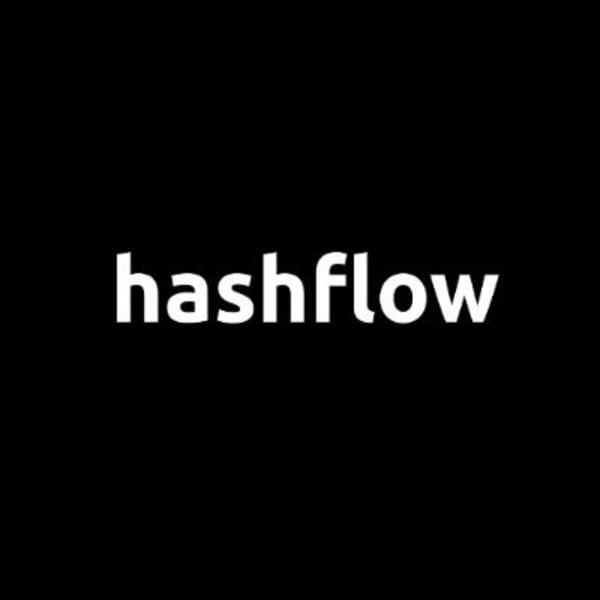
Today, Hashflow announced a 3.2M investment round. Dragonfly co-led Hashflow’s seed round alongside Electric Capital, joined by Alameda Research, Metastable Capital, Galaxy Digital, IDEO Ventures, Gumi Cryptos, Morningstar Ventures, and angels including Balaji Srinivasan, Kain Warwick, and Ryan Sean Adams.
CoinDesk covered the funding announcement here.
Haseeb Qureshi from Dragonfly also released a piece on Medium that explains fully what Hashflow does and the seismic impact it will have on the exchange market.
the TLDR; on HashFlow is that it provides “wholesale” exchange prices direct from the world’s best market makers.
So why did gCC invest in HashFlow? In a word, TEAM.
Team
This one is fairly simple.
gCC is conviction driven. We look for what we call “gumicorn” founders who combine a global visionary scope with grounded execution power. Obviously we also look for very well-thought-out plans that involve solving what we call “fundamental terrain features” that appear in large markets.
We met Varun through a mutual friend Zhen Cao, herself a brilliant and well-connected coinvestor based in China. These types of high trust introductions are fairly typical in VC but it’s probably a cliche because it is something that works.

First impressions
Immediately upon speaking with Varun, we were impressed by his depth of knowledge of the structure of DeFi and we were able to have deep conversations about the problem of custody and exchange. This problem is a significant “terrain feature” of crypto and Varun already had early traction with some exchanges. We immediately sensed the boldness of the vision and quickly committed to participate.
Of course we were also impressed with his technical fluency and understanding of the primitives and his ability to have first-principles conversations about market structure. This kind of conversation is deeply confidence inspiring as founders need deep conviction and clarity about the structure of the market to execute such smooth pivots that inevitably arise in the process of product-market fit.
Product-Market Fit
Since that early interaction, we have been very impressed with the execution. The project immediately pivoted from working with exchange custody problems to focusing on directly enabling DeFi traders to access “Best Price” from the world’s biggest market makers. This is an even more fundamental discontinuity in the space and enables the type of price efficiency of a VEGA style exchange but at the same time the best price seeking power of a 1inch.exchange. We see these portfolio companies as all being synergistic rather than competitive.
We feel that Hashflow has found product-market fit incredibly rapidly which is a strong testament to the team and its deep understanding.
DEX Market
This is well explained by the Medium post by Dragonfly capital, but we wanted to provide our perspective as well:
We see UNIv3 as part of an increased focus on the efficiency of exchange by moving passive liquidity into a “more active” liquidity through mechanisms like price range orders. We see HashFlow as more like endgame dynamic liquidity as market makers offer fixed price bids on set tick intervals. This shifts the metrics of importance away from “Total Value Locked” (TVL) to Total Volume, as TVL becomes more of a measurement of passive liquidity and yes, even inefficiency. The liquidity is just “pooled” there doing nothing, which is considered a feature of AMM rather than a bug. We understand why UNIv3 steps away from the “pure AMM” model but we also don’t see those steps as a first-principles solution to the problem as we see in a VEGA or a Hashflow.
Our philosophy on disintermediation is that any intermediary that adds value is just a peer that another peer consents to transact with. So as long as the intermediary isn’t rent seeking, we see a place for them in the network long term. We see Hashflow as solving a fundamental discontinuity between large institutional and whale-class investors that traditional CLOB (Central Limit Order Book) doesn’t fix.
Of course we are extremely encouraged by the strategic participation of important market making groups in Hashflow and we see that this represent a fundamentally new form of DEX with incredible efficiency.
Future of DEX
Once we are happy with the team we often ask ourselves two questions:
- What is the “durable terrain feature” in question here? and
- Does the market want there to be a big one of these?
To us, the terrain feature is very simple, which is much like Costco provides wholesale prices to consumers, Hashflow provides “wholesale” prices direct to DeFi consumers. This impedance mismatch between the needs of market makers and takers is inefficiently handled by AMM, and is well handled by Hashflow. Hashflow also has some very clever mechanics that will allow them to keep improving and staying ahead of competition, and of course the token will provide a network effect around this.
But in the long run, of course any hugely successful project will bring imitators, and we will see other DEX players trying to take this approach. But like the “Costco” metaphor, the market *will* want there to be a “big one of these” as we expect that there will be network effects and of course the market makers are already joining Hashflow token and therefore can become partial owners of this protocol.
So in the long run, we see a durable business here and one that the market wants to be very big. We see this launch as a fundamental and first-principles new way to execute a DEX and it will produce obvious wins to users via delivering provably better prices by offering a fundamentally new way to approach DEX.
Disclaimer
Information is provided for general educational purposes only. This presentation is not an offer to sell securities or a solicitation of offers to buy securities. Nothing contained herein constitutes investment or other advice nor is it to be relied on in making an investment decision. For more important information, please see disclaimer



